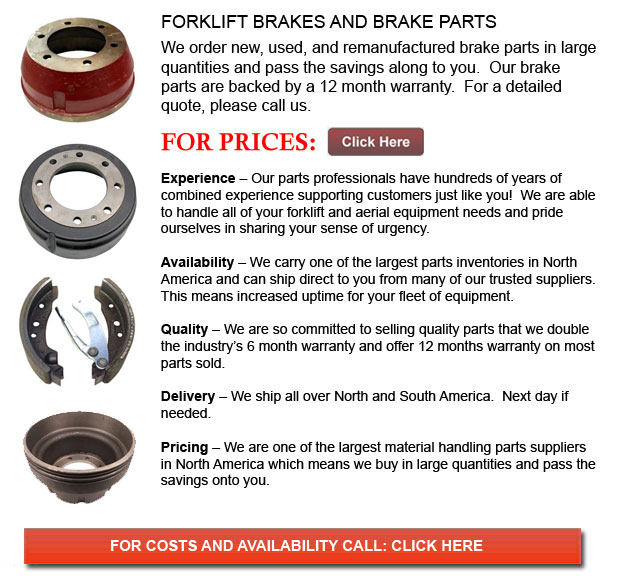
Forklift Brakes - A brake drum is wherein the friction is supplied by the brake pads or brake shoes. The pads or shoes press up against the rotating brake drum. There are some various brake drums kinds with particular specific differences. A "break drum" will normally refer to if either pads or shoes press onto the inner surface of the drum. A "clasp brake" is the term utilized so as to describe if shoes press next to the exterior of the drum. Another kind of brake, known as a "band brake" uses a flexible belt or band to wrap all-around the outside of the drum. If the drum is pinched in between two shoes, it could be known as a "pinch brake drum." Similar to a conventional disc brake, these types of brakes are quite uncommon.
Prior to nineteen ninety five, early brake drums needed constant modification regularly to be able to compensate for drum and shoe wear. "Low pedal" or long brake pedal travel is the hazardous outcome if modifications are not carried out sufficiently. The vehicle can become hazardous and the brakes can become useless when low pedal is mixed together with brake fade.
There are various Self Adjusting Brake Systems obtainable, and they can be categorized within two major types, RAI and RAD. RAI systems have built in devices which prevent the systems to be able to recover when the brake is overheating. The most popular RAI manufacturers are AP, Bendix, Lucas, and Bosch. The most famous RAD systems consist of Ford recovery systems, Volkswagen, VAG, AP and Bendix.
Self adjusting brakes normally make use of a mechanism that engages just whenever the vehicle is being stopped from reverse motion. This stopping method is satisfactory for use where all wheels make use of brake drums. Most vehicles these days use disc brakes on the front wheels. By functioning only in reverse it is less likely that the brakes would be adjusted while hot and the brake drums are expanded. If adapted while hot, "dragging brakes" could occur, which increases fuel expenditure and accelerates wear. A ratchet mechanism which becomes engaged as the hand brake is set is one more way the self repositioning brakes could operate. This means is only appropriate in functions where rear brake drums are used. When the emergency or parking brake actuator lever exceeds a certain amount of travel, the ratchet improvements an adjuster screw and the brake shoes move toward the drum.
Located at the bottom of the drum sits the manual adjustment knob. It can be adjusted utilizing the hole on the opposite side of the wheel. You would have to go underneath the vehicle utilizing a flathead screwdriver. It is very vital to adjust each wheel evenly and to move the click wheel properly since an unequal adjustment can pull the vehicle one side during heavy braking. The most efficient method to guarantee this tedious job is completed safely is to either raise each and every wheel off the ground and spin it manually while measuring how much force it takes and feeling if the shoes are dragging, or give every\each and every one the exact amount of clicks using the hand and then do a road test.
![]() Click to Download the pdf
Click to Download the pdf
Forklift Parts
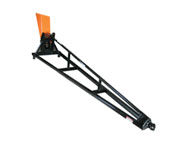
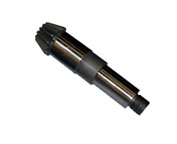
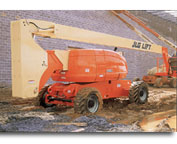
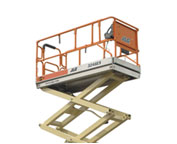
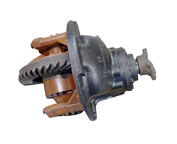
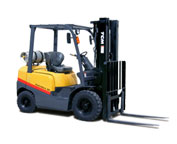
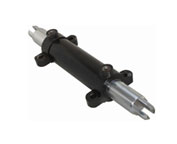
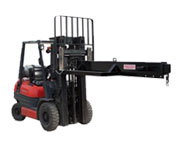
Lift Parts Express
TOLL FREE: 1-888-695-7994
LOCAL: 360-558-7207
6715 NE 63RD 103-256
Vancouver, Washington
forkliftpartsinvancouver.com
Email Us
About Us


